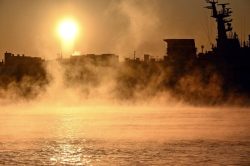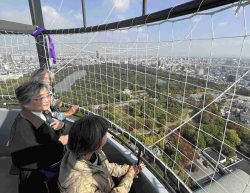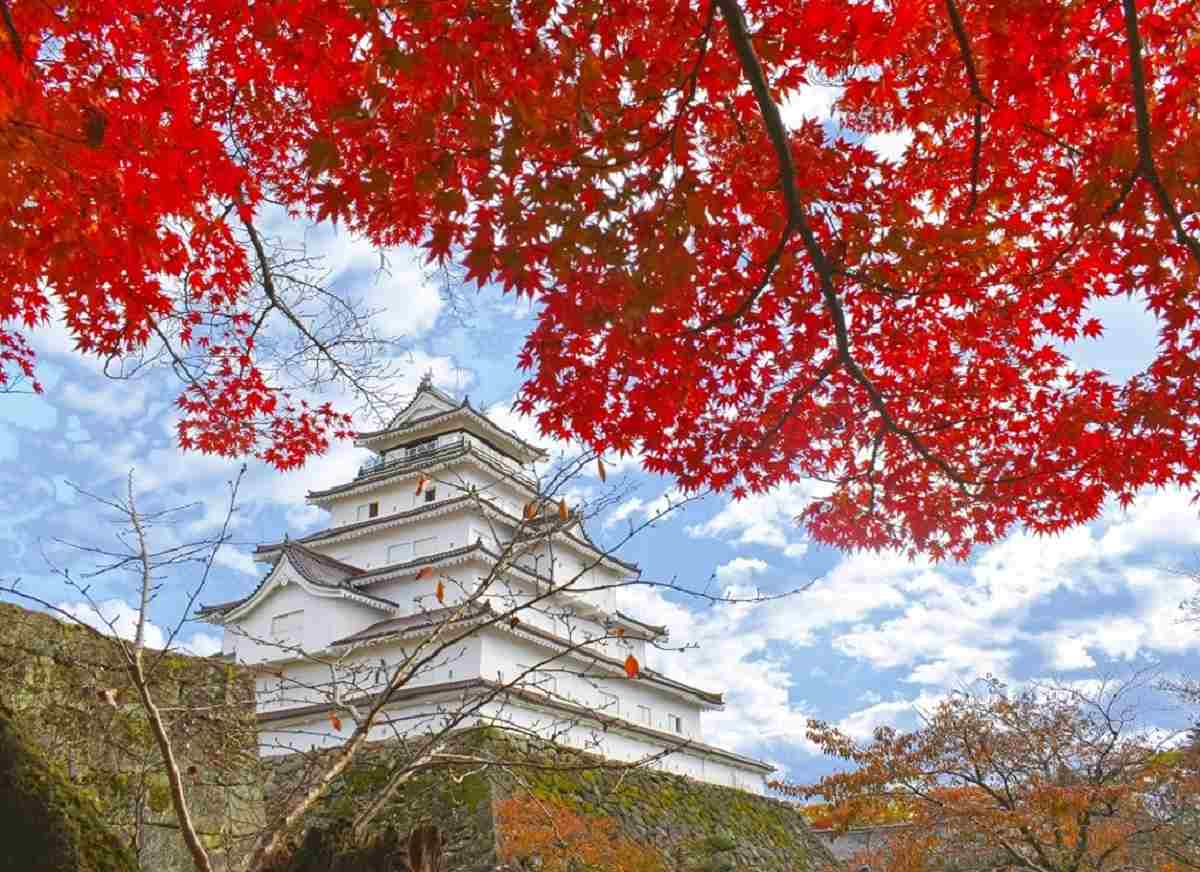
Aizu-Wakamatsu Castle
13:00 JST, October 25, 2023

AIZU-WAKAMATSU, Fukushima — Tsuruga Castle sits on an alluvial fan formed by the Yugawa river in Aizu-Wakamatsu, Fukushima Prefecture.
The fortress— which developed from a lookout tower-style keep built in 1593 by Gamo Ujisato — is also known as Aizu-Wakamatsu Castle.
During the Boshin War (1868-1869), the citadel withstood a monthlong siege but was eventually devastated due to heavy daily bombardments of up to 2,500 explosive shells. It was effectively gutted in 1874, leaving only the outer walls standing.
Despite a split in public opinion, the tenshukaku main tower was rebuilt in 1965. The reconstruction aimed to accurately convey the history of the historic Aizu domain and surrounding areas by using the tower to host a local history museum.
Following seismic reinforcement and other work, the tower reopened last April, featuring many new exhibits.
The facility uses digital technology to enhance the visitors’ experience. For example, the Boshin War is explained using video and audio alongside exhibits that detail Aizu-related themes and the turbulent years of the Edo period (1603-1867).
Scenes depicting the Aizu clan’s military strategies and the shelling conducted by the Meiji government are projected onto a diorama of the castle and local area.
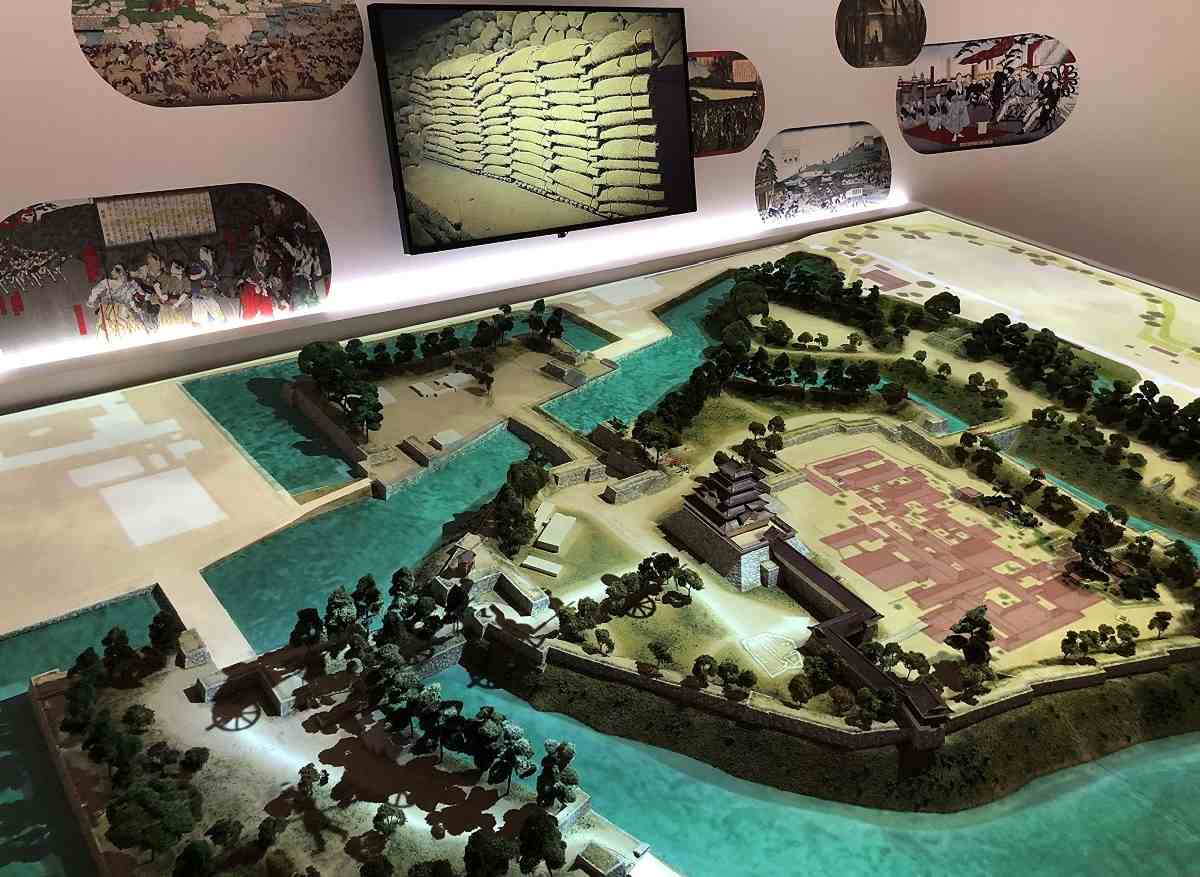
A diorama of Aizu-Wakamatsu Castle
From the top-floor observatory, visitors can enjoy panoramic views of the Aizu area, Mt. Bandai and other nearby mountains.
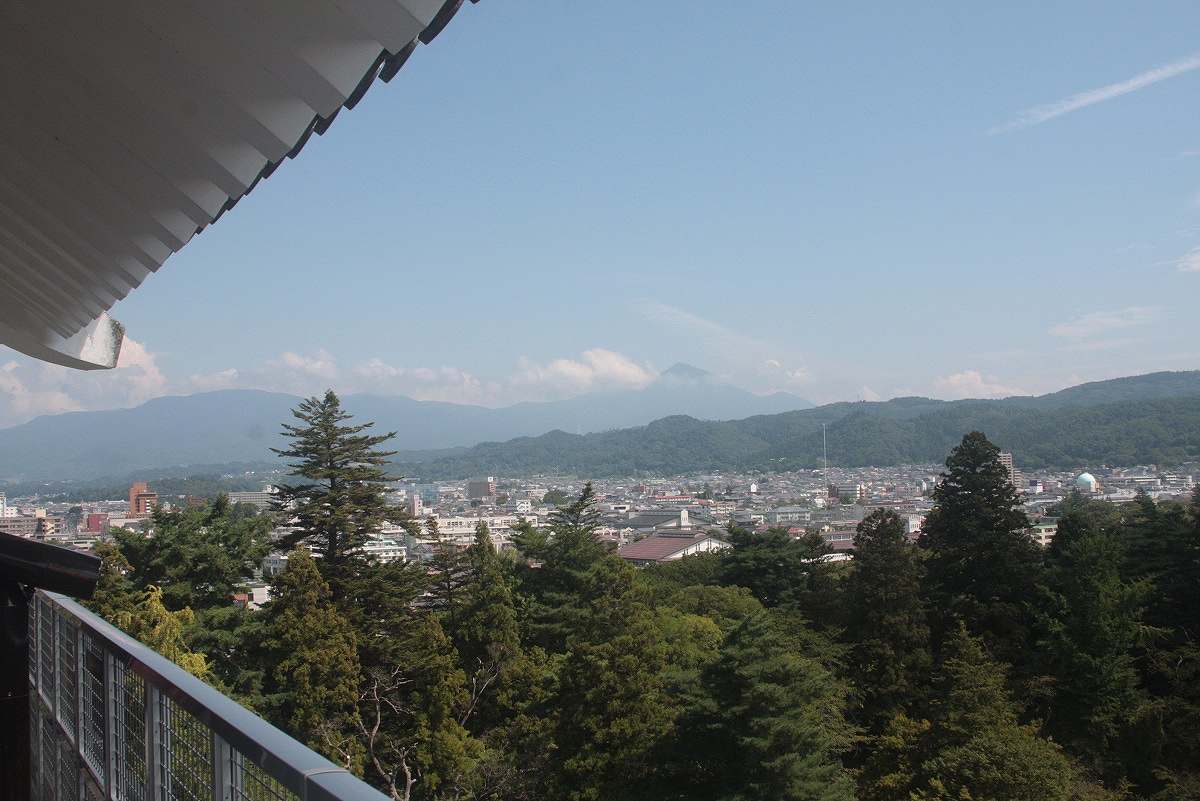
A view from the observatory of Tsuruga Castle
Toshihiro Saito, an official of the Aizuwakamatsu Tourism Bureau’s keep-management division, explained that members of the Byakkotai — young warriors of the Aizu domain — took their own lives after being pushed back by government forces, halfway up Mt. Iimori.
Saito’s remarks invoked memories of Mt. Iimori, where I saw a statue of a Byakkotai fighter that is said to face the direction of Tsuruga Castle.
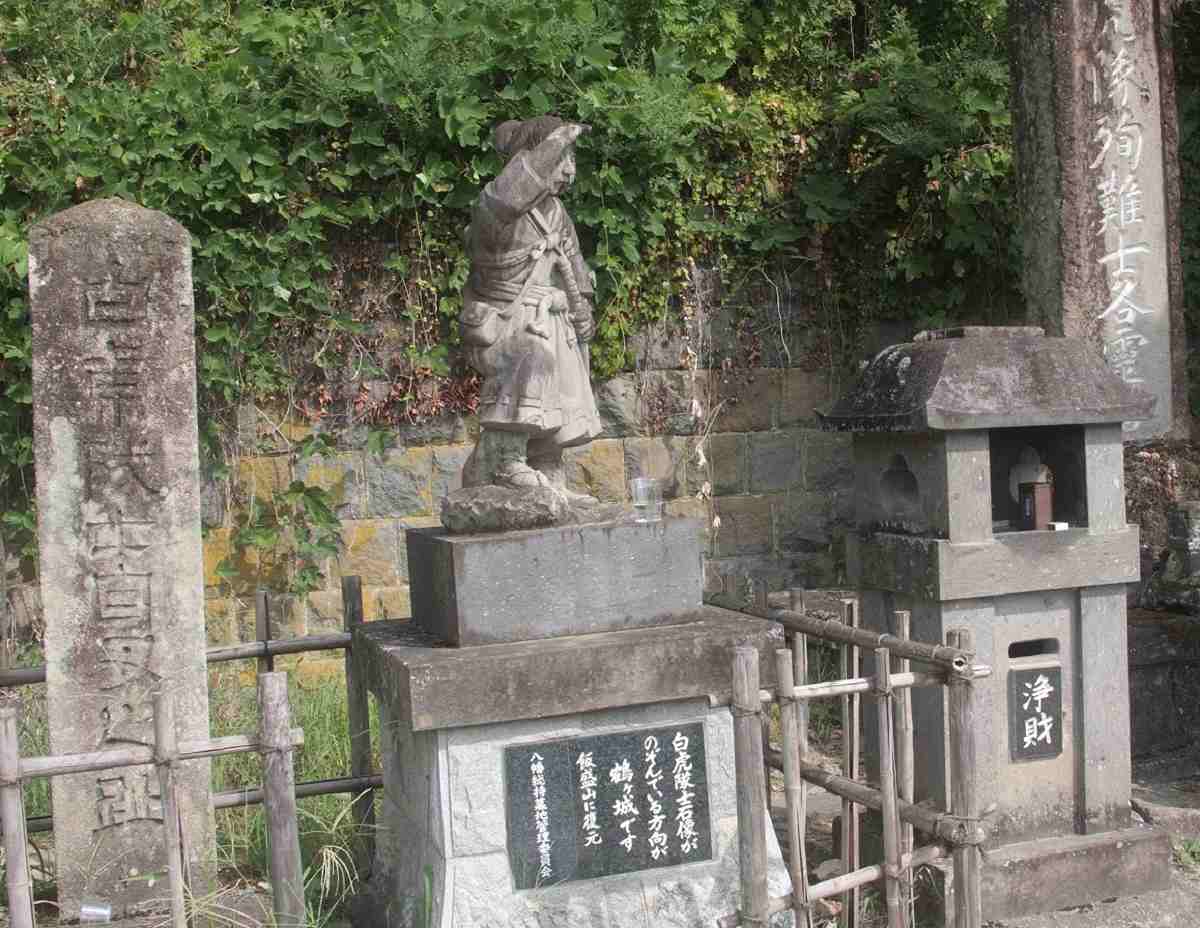
A statue depicting a Byakkotai fighter
Ojoin and Omotegozasho buildings once sat on the east side of the castle’s honmaru area. Now, however, the spot is a lawn.
The Rinkaku tea-ceremony facility — long linked to the Sen family — has been reconstructed in a corner of the grounds, allowing visitors to enjoy matcha tea while viewing autumn foliage.
The only remaining structure in the central honmaru building is the Gosankai, a small castle tower that has been moved to Amidaji temple in Nanuka, Aizu-Wakamatsu, along with the honmaru building’s front entrance gate.
Nanukamachi-dori street is lined with warehouses and Western-style houses dating to the Meiji (1868-1912) and Taisho eras (1912-1926), restaurants serving local cuisine and shops that sell traditional Aizu lacquerware, candles and other items.
***
Japan Tourism is presented in collaboration with Ryoko Yomiuri Publication, which publishes Ryoko Yomiuri, a monthly travel magazine. If you are interested in the original Japanese version of this story, click here.
"Features" POPULAR ARTICLE
-

Sanrio to Open Museum in Yamanashi Pref. Dedicated to Founder, Exhibits Include Hello Kitty, Other Characters
-

Autumn Foliage Surrounds Visitors to Tokyo’s Showa Kinen Park
-

My Daughter No Longer Speaks to Me, But I Want to See Her and My Grandchild
-

Kumamoto: Public Bath Refurbished as Library Where You Can Chat, Take Photos
-
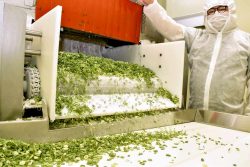
Frozen Vegetables: Demand Rises for Convenient, Tasty Domestic Produce
JN ACCESS RANKING
-

Keidanren Chairman Yoshinobu Tsutsui Visits Kashiwazaki-Kariwa Nuclear Power Plant; Inspects New Emergency Safety System
-

Imports of Rare Earths from China Facing Delays, May Be Caused by Deterioration of Japan-China Relations
-

University of Tokyo Professor Discusses Japanese Economic Security in Interview Ahead of Forum
-

Japan Pulls out of Vietnam Nuclear Project, Complicating Hanoi’s Power Plans
-

Govt Aims to Expand NISA Program Lineup, Abolish Age Restriction



